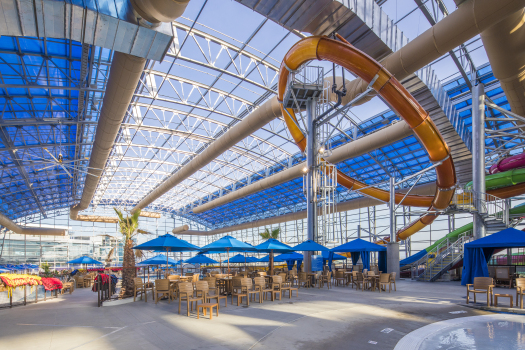David J. Sangree, MAI, CPA, ISHC recently spoke at the Society of Travel Writers Conference in Cleveland, Ohio. Following are David’s thoughts on the top 10 trends taking hold in the hotel industry:
Recent Hotel Trends
- There is an increased use of multiple brands in a single urban hotel structure, saving costs on management, infrastructure and other expenses. It also offers customers a hotel choice to meet their specific needs, thus increasing the odds that they select the property.
- Resort properties are increasingly adding waterpark and recreational elements to attract guests. Resorts and hotels are adding water slides and spray elements to their pool space, which attracts traveling families as well as local weekend and holiday visitors. Resorts are adding zip lines, climbing walls, and ropes courses (among other recreational components), giving consumers a reason to stay and play.
- Room service is less prevalent as hotels forego the revenue loser in favor of grab-and-go options and collaborations with local delivery restaurants. Although this saves hotel expenses, guests are not always happy with the change. Many younger guests tend to prefer casual dining and the ease of using smartphone and tablet apps to order.
- Midscale and Upscale limited- and select-service properties are seeing much greater development than upper upscale or economy brands. Due to their strong performance and customer interest, local developers are choosing to develop limited- and select-service properties that lenders will finance. The demand is fueled by consumers who want an attractive, clean room along with free Wi-Fi and breakfast at an affordable price.
- Although hotel construction is up across the board, the numbers may be deceptive. This is due to a year-over-year increase following a historical low. The 91,000+ rooms under construction in early 2014 do not come near the 200,000+ rooms under construction during the same time in 2007. Larger markets are seeing increases, but the majority are seeing limited change.
- New York City continues to lead all markets in hotel development, according to Smith Travel Research. With 11,189 rooms under construction in 2014, New York is on track to increase supply by 10.3%. The other top five markets are Washington DC with 2,819 rooms, Los Angeles-Long Beach with 2,523 rooms, Orlando with 2,358 rooms, and Miami-Hialeah with 1,975 rooms.
- Although the U.S. hotel industry sold more rooms in 2013 than ever before, investors are slower to build new hotels. Investors want to join the market but obtaining sites and financing continues to be challenging.
- Globalized travel to the USA is increasing with the launch of the Discover America campaign. Along with a boost to travel spending, the additional surge of international visitors is expected to bring higher average rates and occupancy levels in major markets such as New York City.
- As social media and mobile devices continue to gain popularity, hotel marketers are seeking ways to capitalize. North America is expected to see online access from mobile devices exceed that of laptops and desktops in 2014, and hotel marketing will need to adapt to this trend to stay relevant.
- Hotels are managing their online reputations since ratings mean business now more than ever. Now that word of mouth is digital, online ratings can make or break a property. Hotels are managing hundreds of reviews across an array of digital platforms daily.


